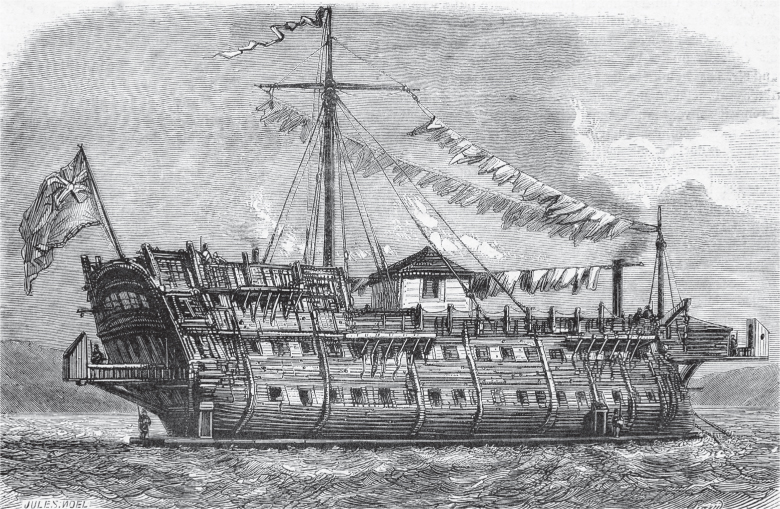
1 An English prison ship, from a French print dated 1846.

1 An English prison ship, from a French print dated 1846.
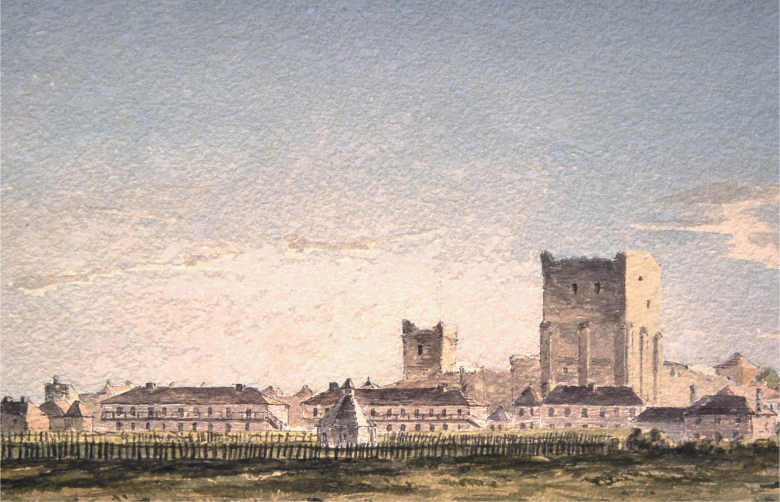
2 The military barracks along the north wall of Portchester Castle. The only building that survives today is the garrison’s brick-built powder store. (Captain Durrant, reproduced with permission of Hampshire Museums Service)
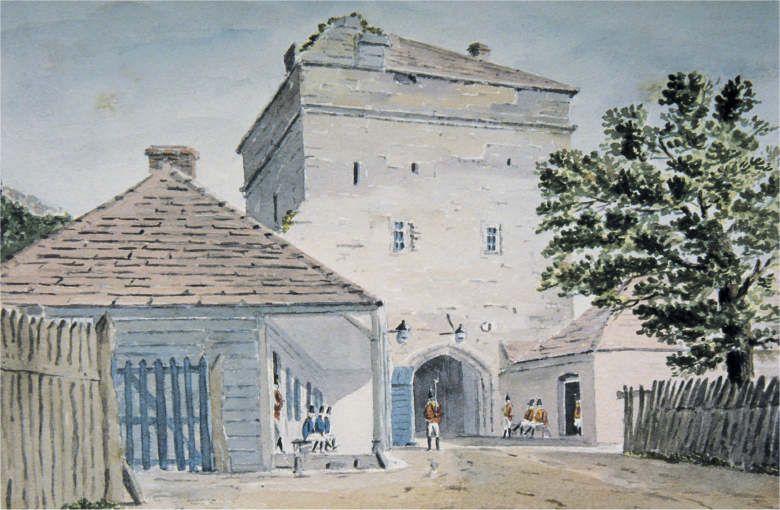
3 The Landgate at Portchester Castle circa 1813. The guard house to the left survived until the 1960s. (painting by Captain Durrant, reproduced with permission of Hampshire Museums Service)
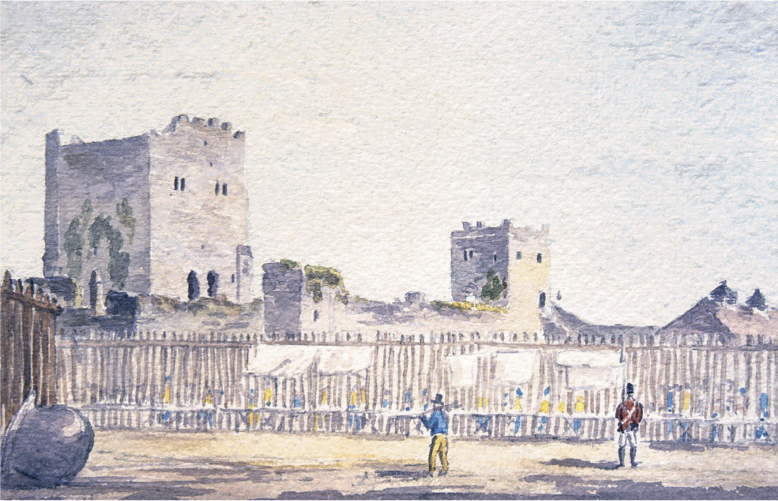
4 Interior of Portchester Castle showing the stockade that separated the northern half of the outer bailey and the medieval buildings where prisoners were housed. (Captain Durrant, reproduced with permission of Hampshire Museums Service)
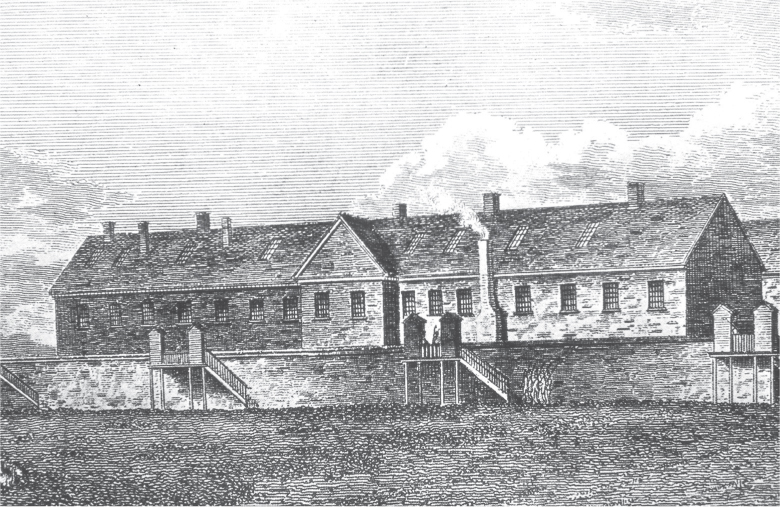
5 Stapleton Prison, Bristol. (From an engraving by J.P. Malcolm; Gentleman’s Magazine, May 1814)
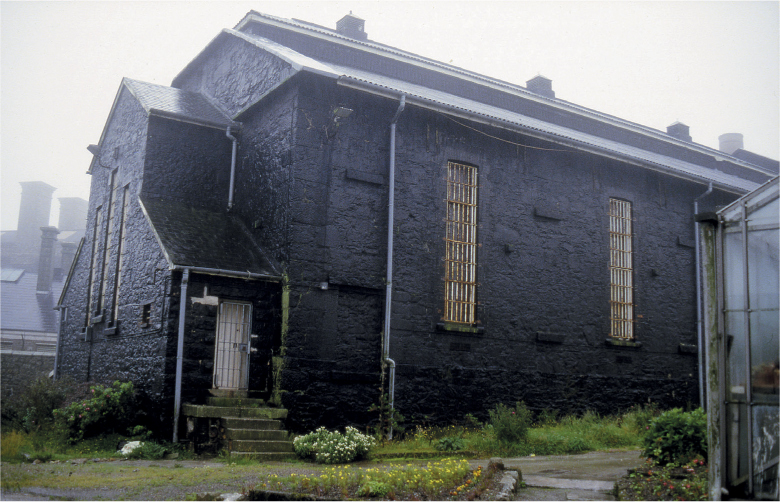
6 One of the original barrack buildings at Dartmoor Prison. (Author)
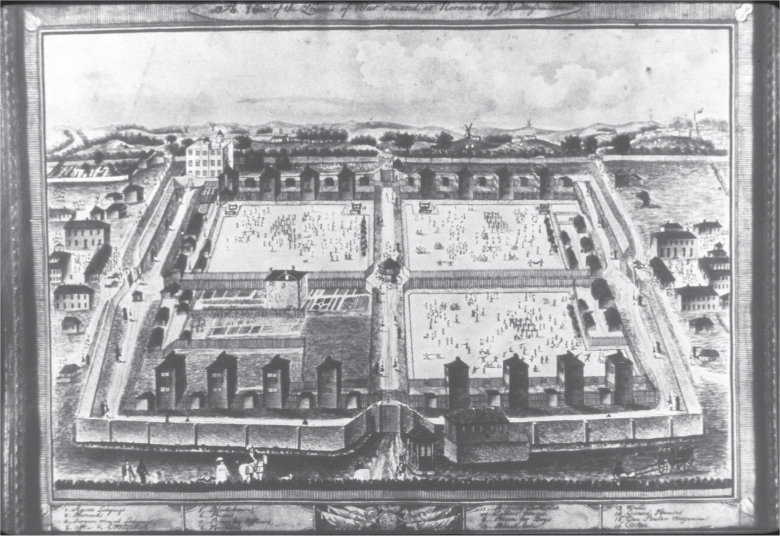
7 Painting of the depot at Norman Cross. (Peterborough Museum and Art Gallery)
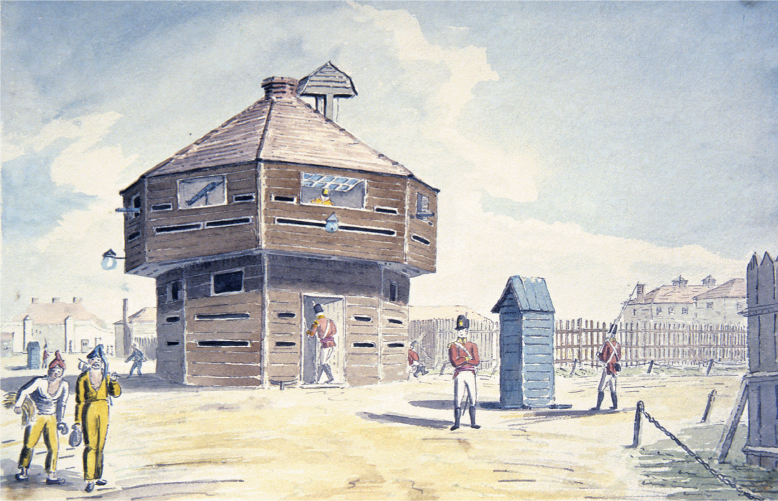
8 The Blockhouse at the centre of Norman Cross prison depot. Note the alarm bell, 3-pounder swivel guns, and numerous musket slits that could direct fire into any of the prison courtyards. (Captain Durrant, reproduced with permission of Hampshire Museums Service)
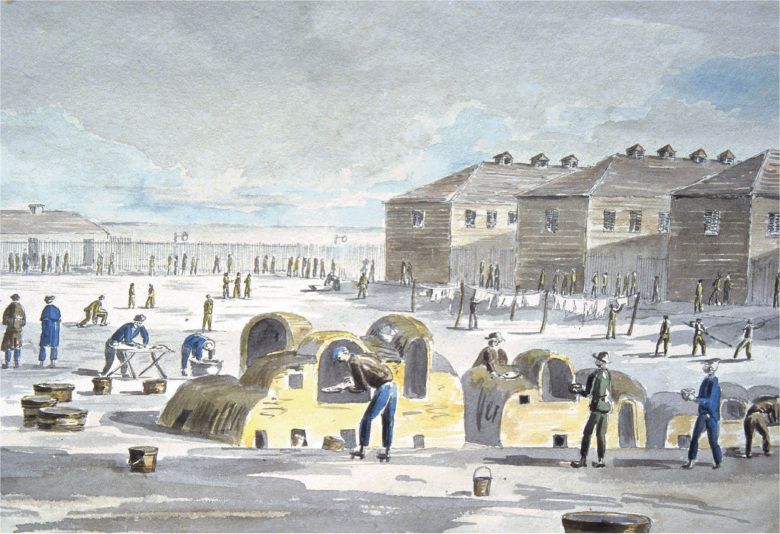
9 One of the courtyards of Norman Cross prison, showing the open-air ovens the prisoners were allowed to bake bread. (Captain Durrant, reproduced with permission of Hampshire Museums Service)
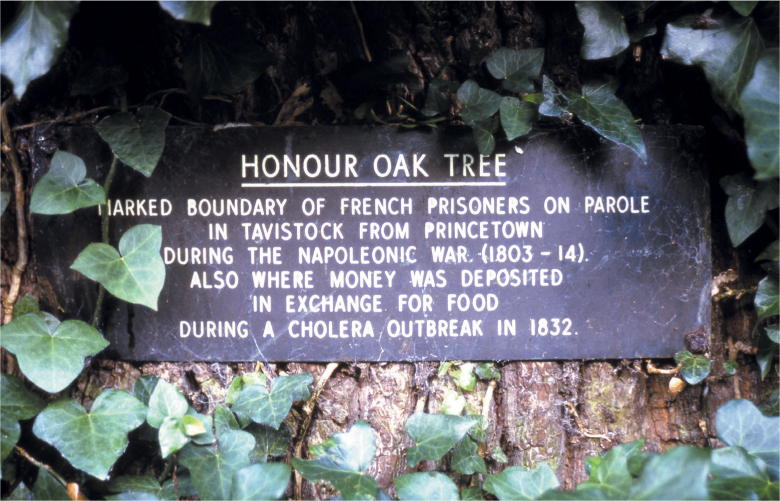
10 The Honour Oak Tree that marked the parole limit of prisoners at Tavistock, Devon. (Author)
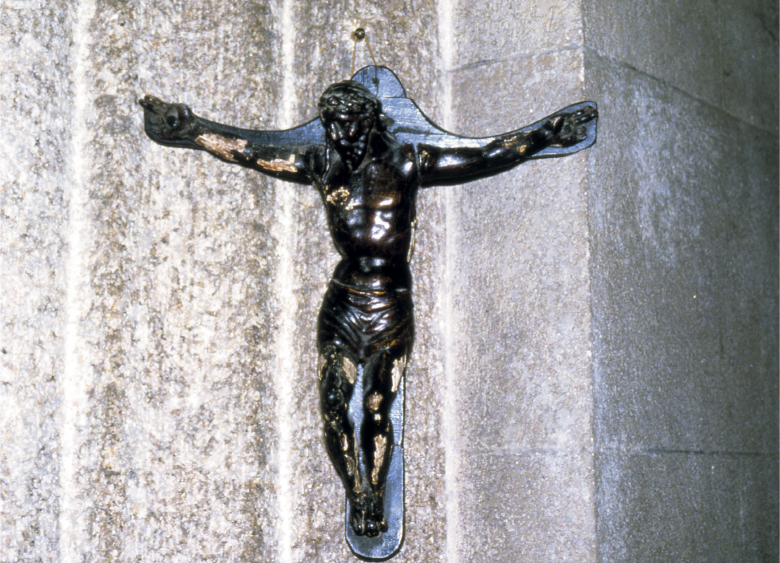
11 The crucifix from Badajoz, given to Abraham Shepherd and now in St Mary’s Church, Launceston, Cornwall. (Author)
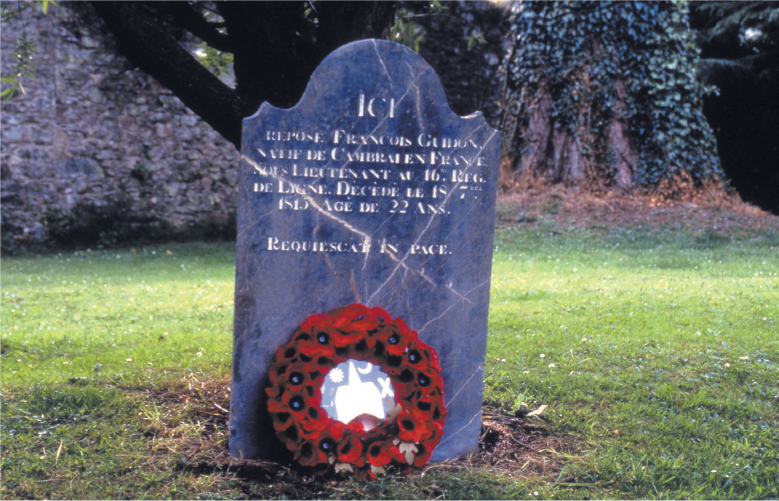
12 The grave of Francois Guidon, Ashburton, Devon. The wreath was laid as part of the twinning ceremony with Cleder, France, in 1985. (Author)
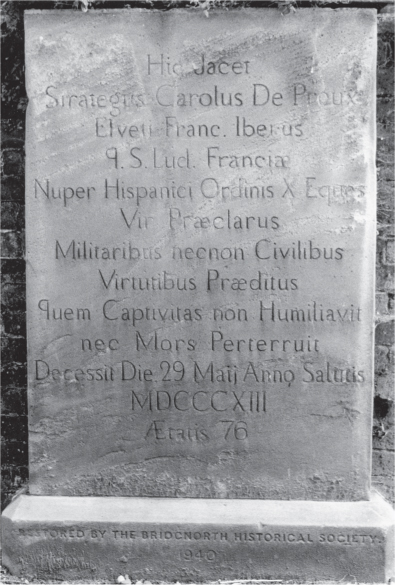
13 The gravestone of Géneral de Brigade Charles de Proux, captured in Spain in August 1812 and ‘Discharged Dead’ on 29 May 1813 aged 76 years, whilst on parole at Bridgnorth. (Author)
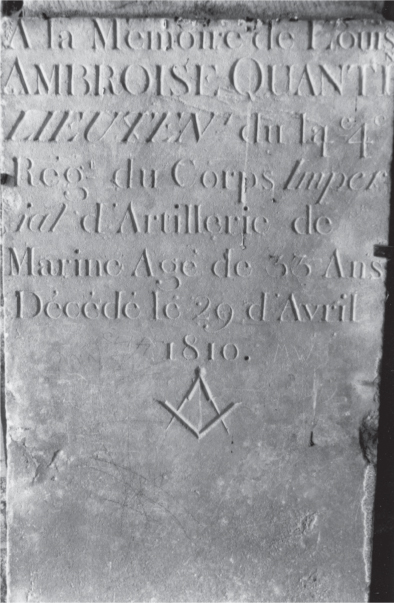
14 Louis Ambroise Quantain died at Moreton Hampstead on 29 April 1810. He was ‘interred with Masonic honours, he being a Freemason. One hundred and four French and Danish officers that were on parole here, as well as most of the respectable inhabitants of this place attended his funeral’. (Author)
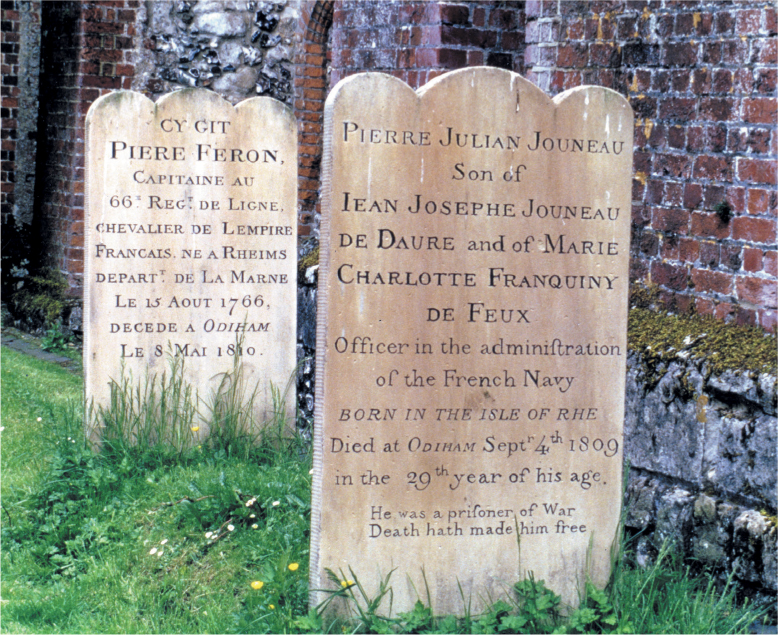
15 Captain Pierre Feron of the 66th Regiment was captured on Guadeloupe in February 1810, and died at Odiham on 7 April. He was buried alongside Pierre Jouneau who had been taken at sea in 1805 and died 4 September 1809 on parole. (Author)
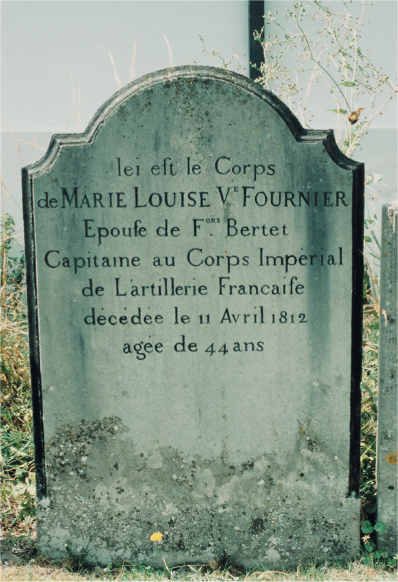
16 Marie Louis Fournier was the wife of Captain Francois Bertet. After his capture on Guadeloupe in February 1810 she elected to accompany him on parole to Alresford, Hampshire, where she died on 11 April 1812. (Author)
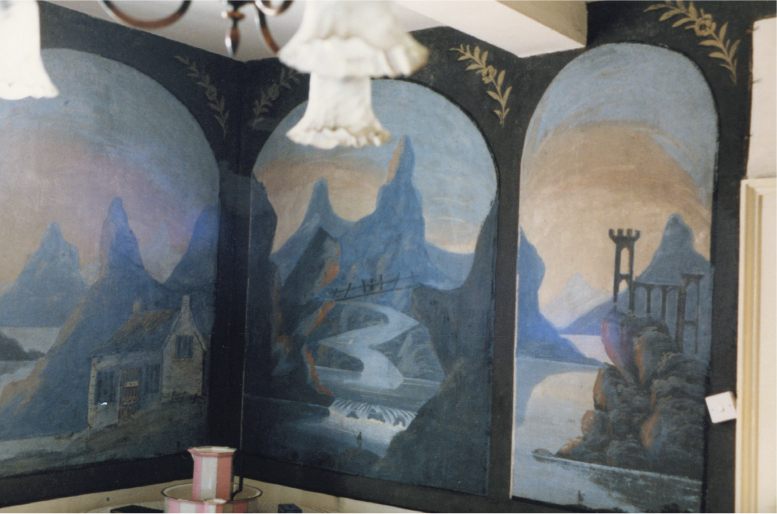
17 The Council House, Llanfyllin, Wales. The interior decorating was performed by Lieutenant Pierre Augeraud, who was captured in Spain in 1812. (Author)
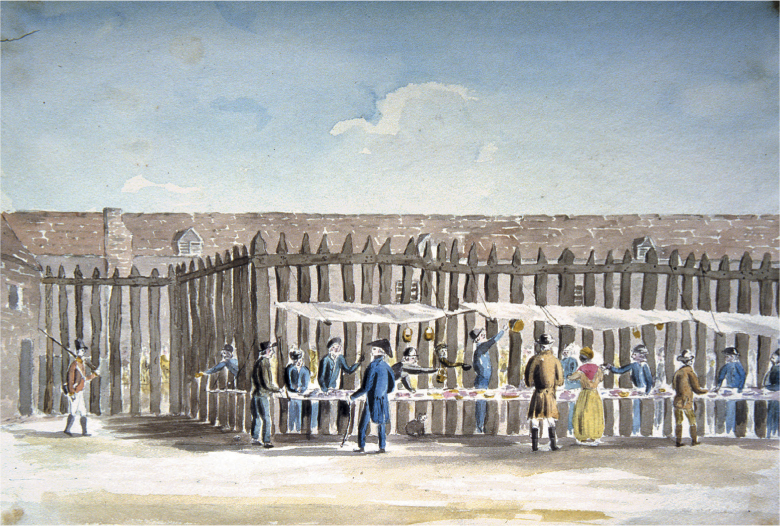
18 The market stalls at Forton Prison. (Captain Durrant, reproduced with permission of Hampshire Museums Service)
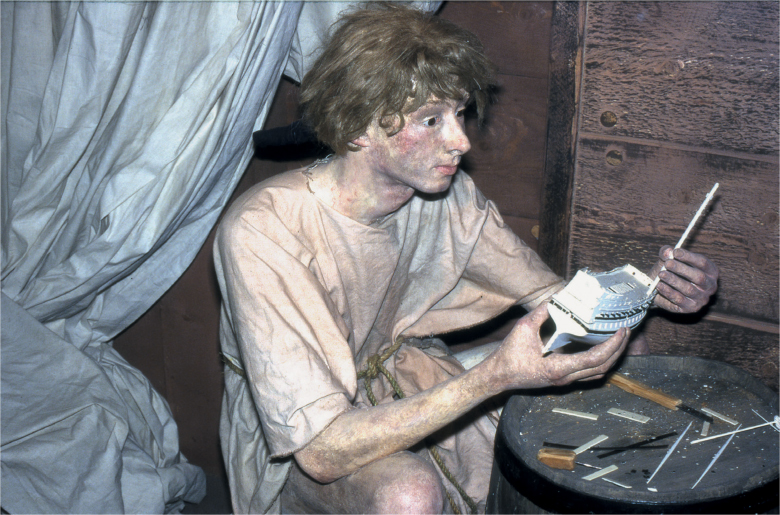
19 A prisoner making a model of bone saved from his meat ration. This is part of a display telling the story of the prison hulks, in the Guildhall Museum Rochester. (Author)
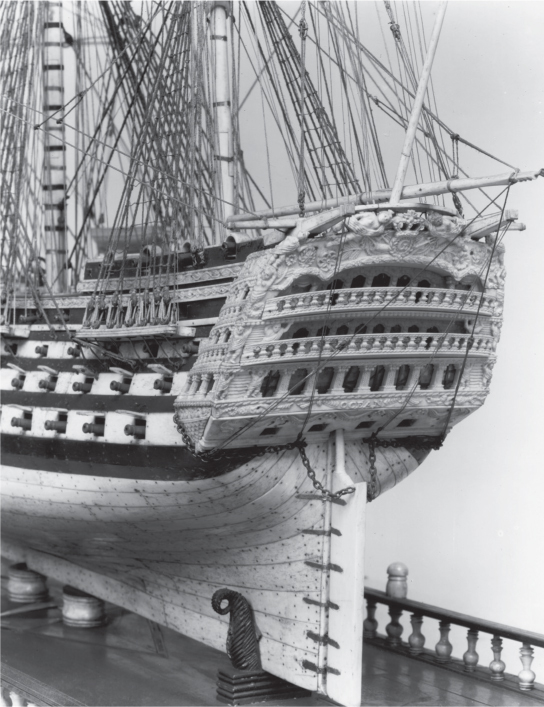
20 Intricately carved stern of bone ship model in the Science Museum, London. (Science Museum)
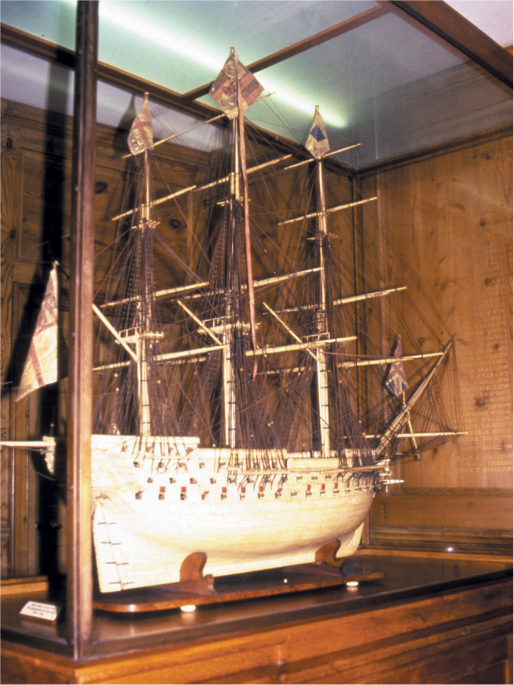
21 Bone ship made by American prisoners at Dartmoor and now in the Watermen’s Hall, Billingsgate. This is the largest model known at 7 feet in length. The plinth on which it stands is of wood from HMS Temeraire. (Author)
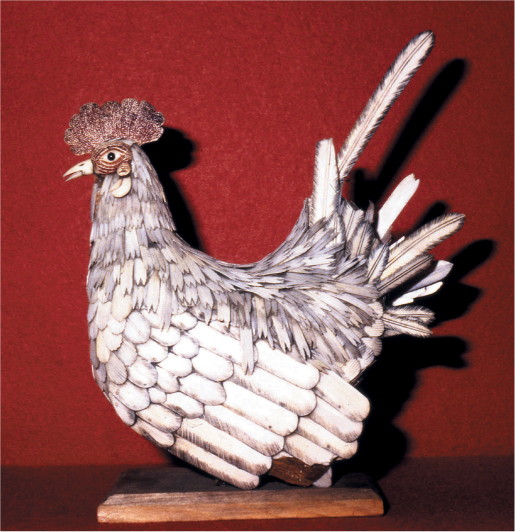
22 The prisoners made models of anything their imagination and ingenuity could devise. This cockerel stands about 9 inches high, and each feather is a separately carved strip of bone. It is on display in the Norman Cross Collection, Peterborough Museum and Art Gallery. (Author)
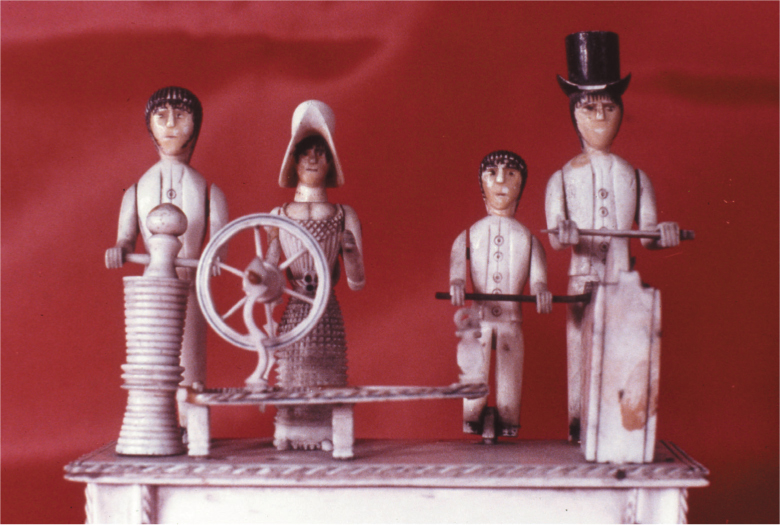
23 Many of the models had working mechanisms. When a handle is turned on this model the spinning wheel rotates and the figures move. (Peterborough Museum and Art Gallery)
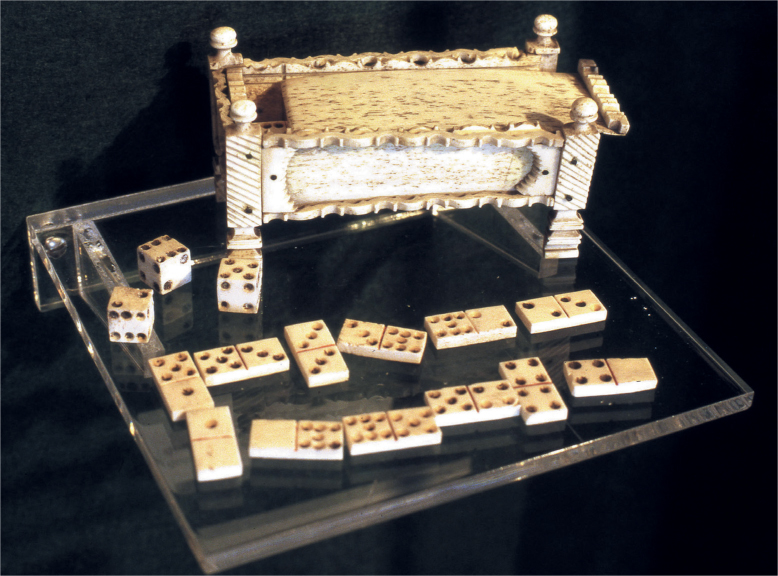
24 The dice and dominos in this box reflect the serious problem that gambling posed in all the depots. This domino box is on display in Southsea Castle, Portsmouth. (Author)
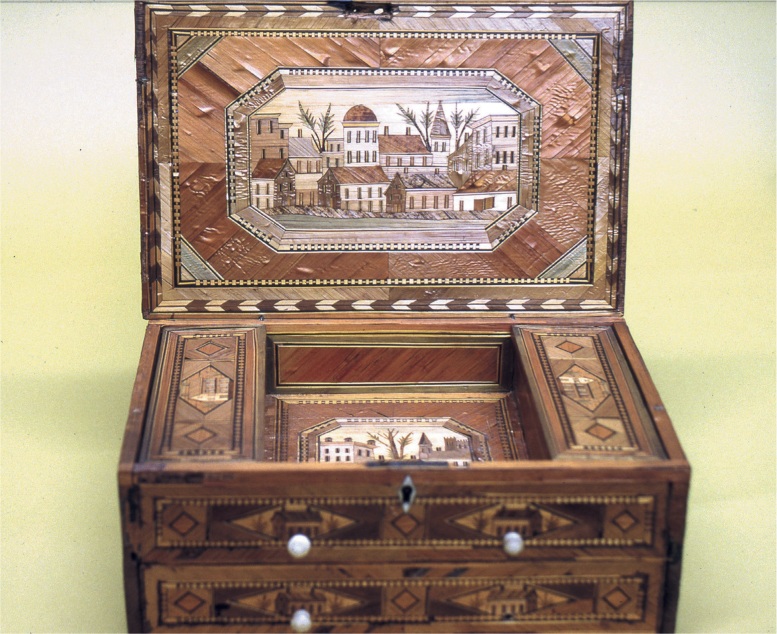
25 Straw marquetry trinket box in Plymouth Museum. (Author)
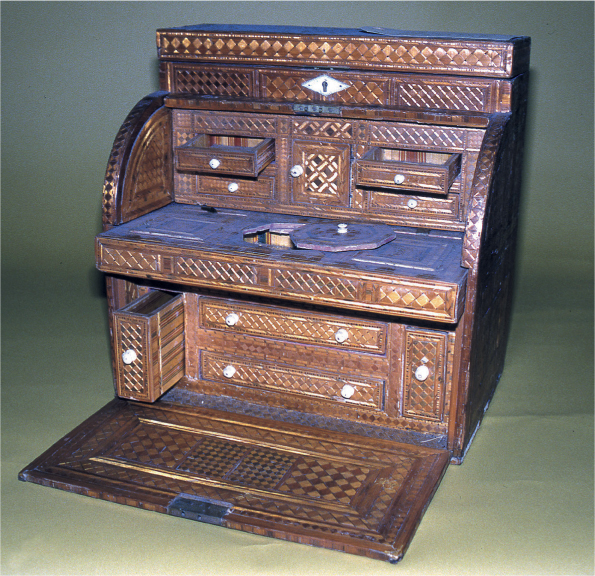
26 Straw marquetry box in the form of a writing desk in Plymouth Museum. (Author)
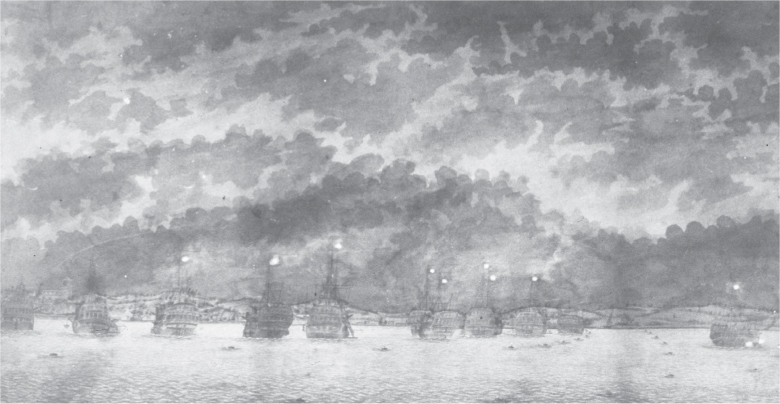
27 A Night View of the Prison Ships Lying in Gillingham near Chatham by Francois St. Jean. Note the alarm lanterns at the top of the masts, and the musket flashes of the guards firing at prisoners escaping from the Sampson in the bottom right corner of the picture. (Guildhall Museum Rochester)
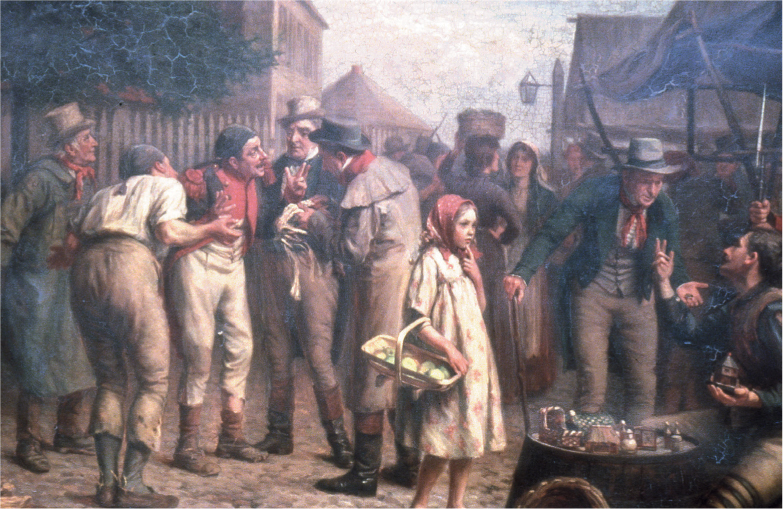
28 Straw Plait Merchants trading with prisoners of war at Norman Cross. This is artistic licence as the activity was illegal and would not have occurred so openly as this (Painting by A.C. Cooke, reproduced with permission of Luton Museums Service)
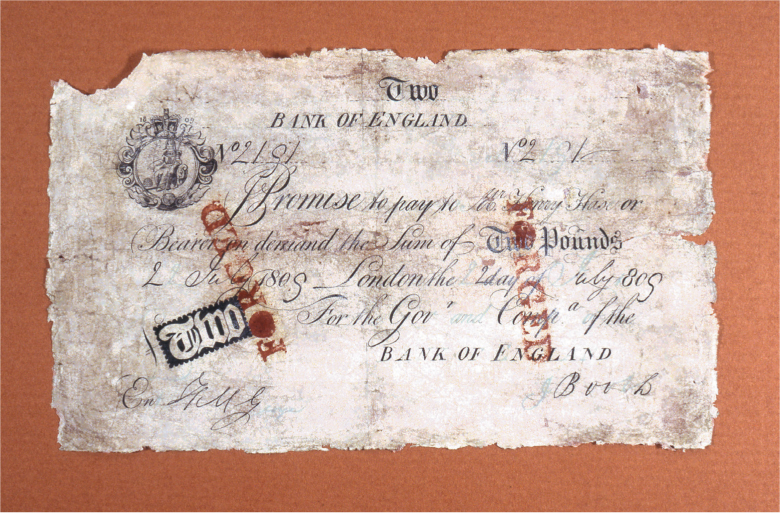
29 Forged £2 banknote found on board a prison ship and officially declared a forgery by the Bank of England. (Bank of England Museum)
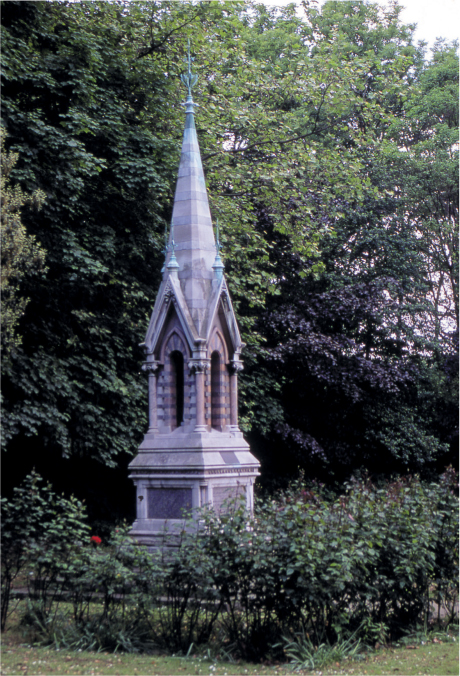
30 The memorial to prisoners of war at Chatham. (Author)
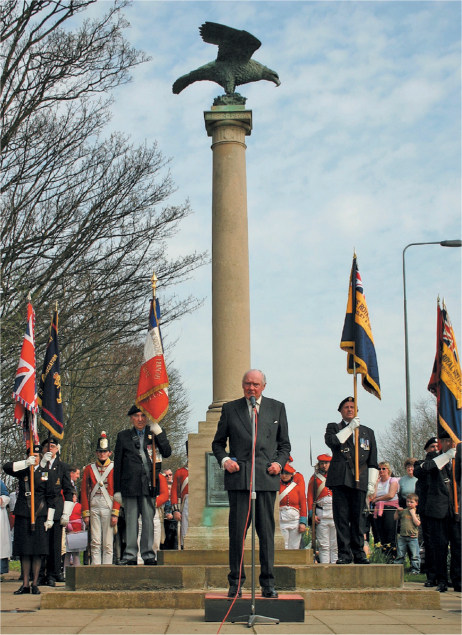
31 In April 2005 His Grace the Duke of Wellington inaugurated the restored eagle memorial at Norman Cross. This memorial is a tangible reminder that the final resting place of 1,770 French and Dutch prisoners of war is near the site of this depot. (The Norman Cross Eagle Appeal)
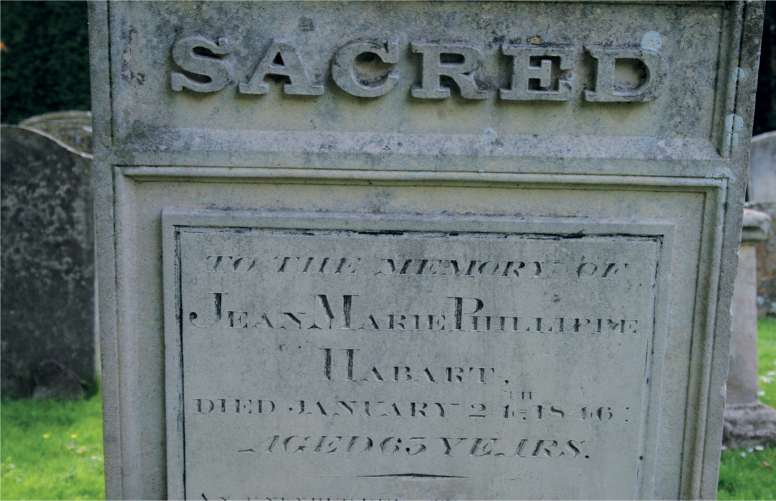
32 The gravestone of Jean Marie Philippe Habart in Stilton churchyard. Habart had been held in Norman Cross and was one of the few prisoners who stayed in England after the war. He married Elizabeth Snow of Stilton, set up in business as a baker and corn merchant, and was robbed and murdered in 1846. (Author)